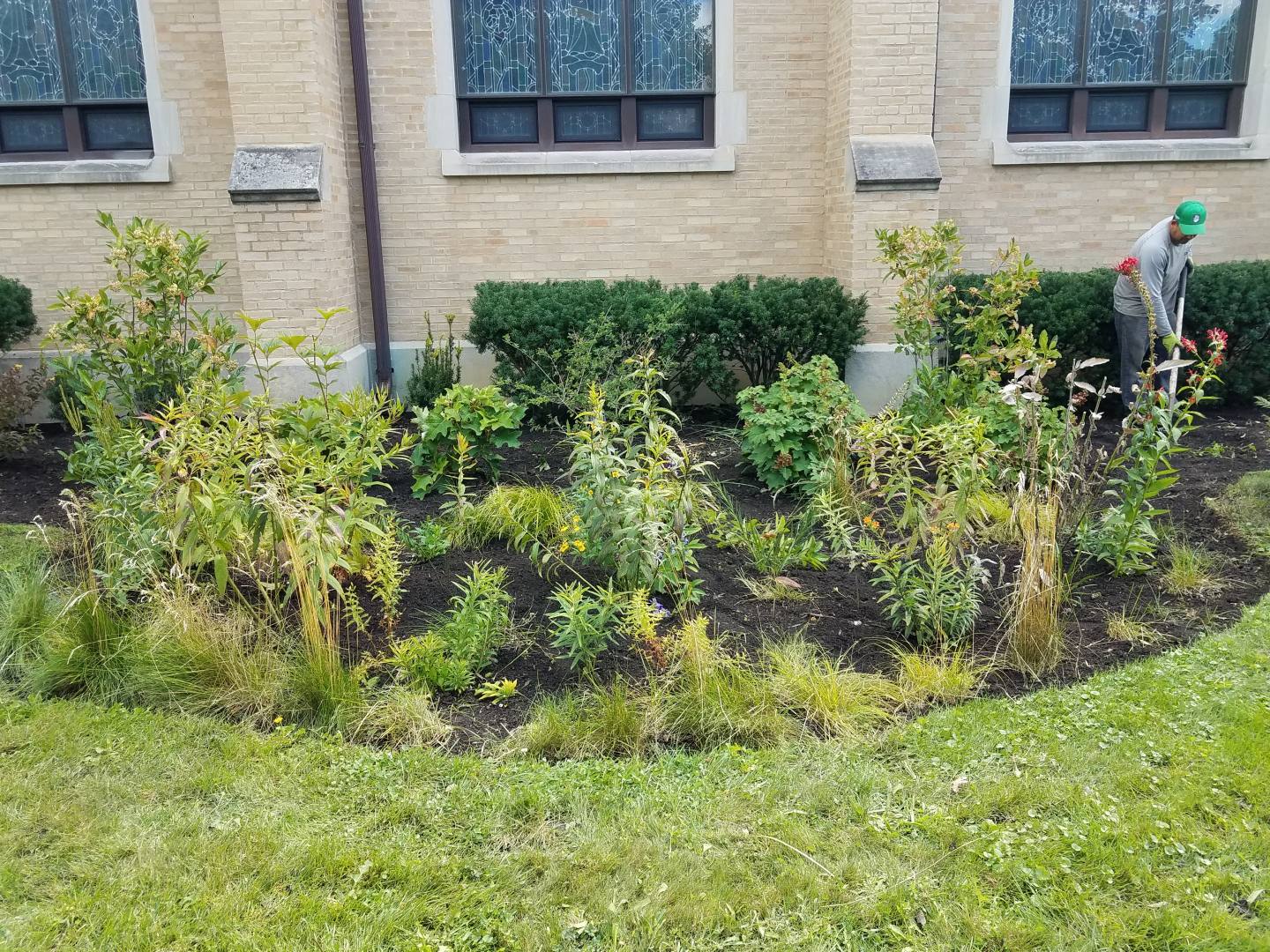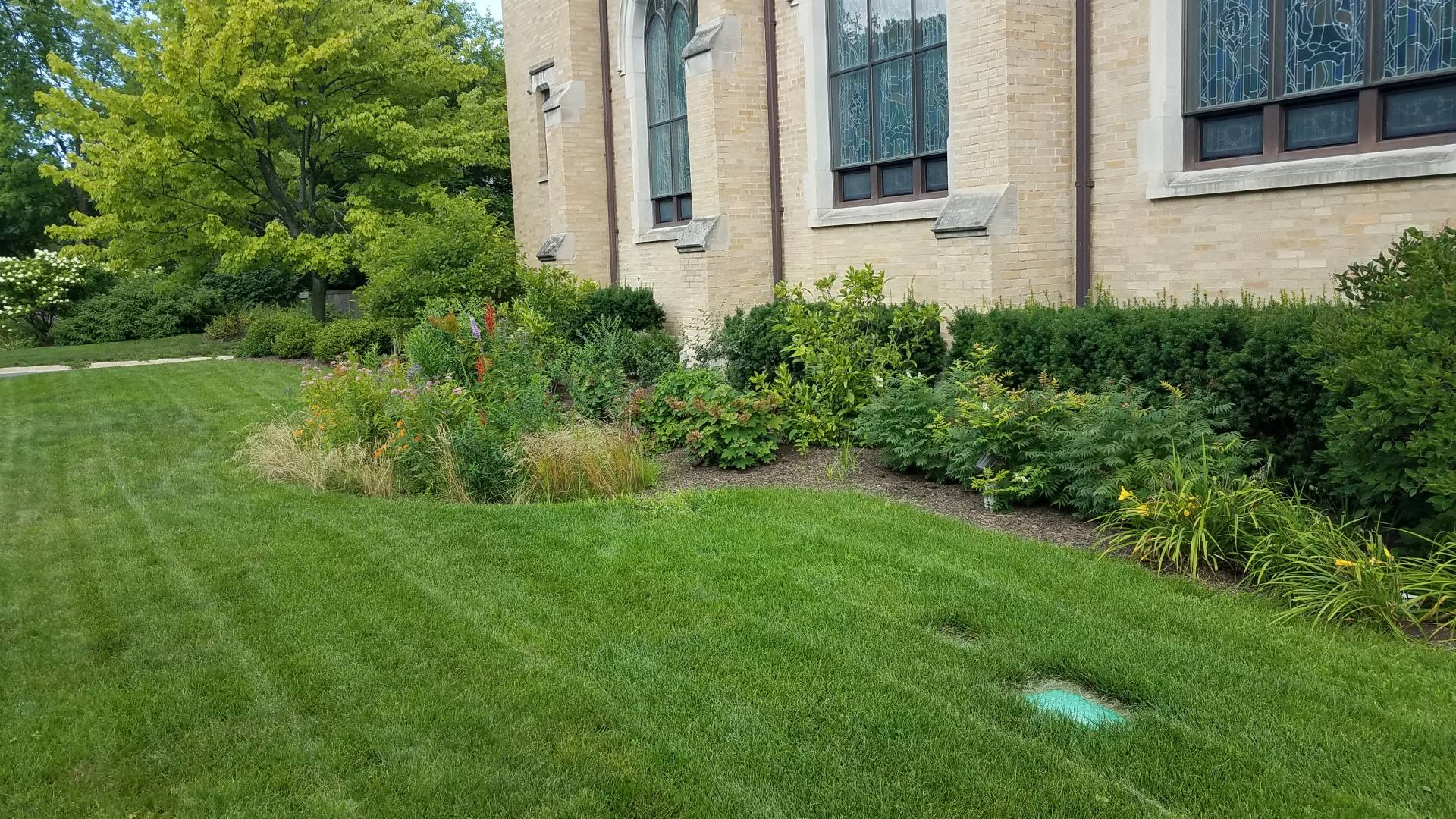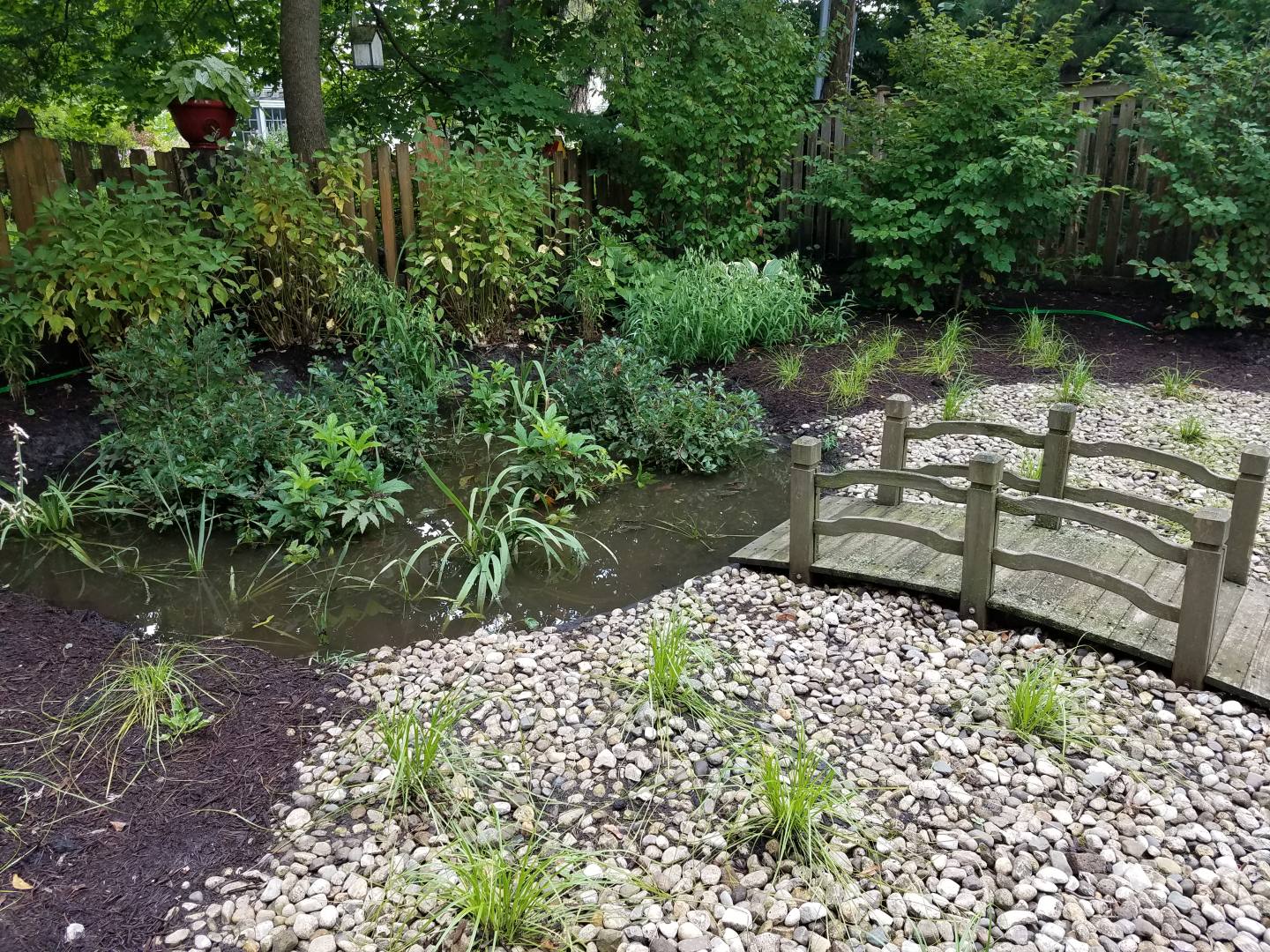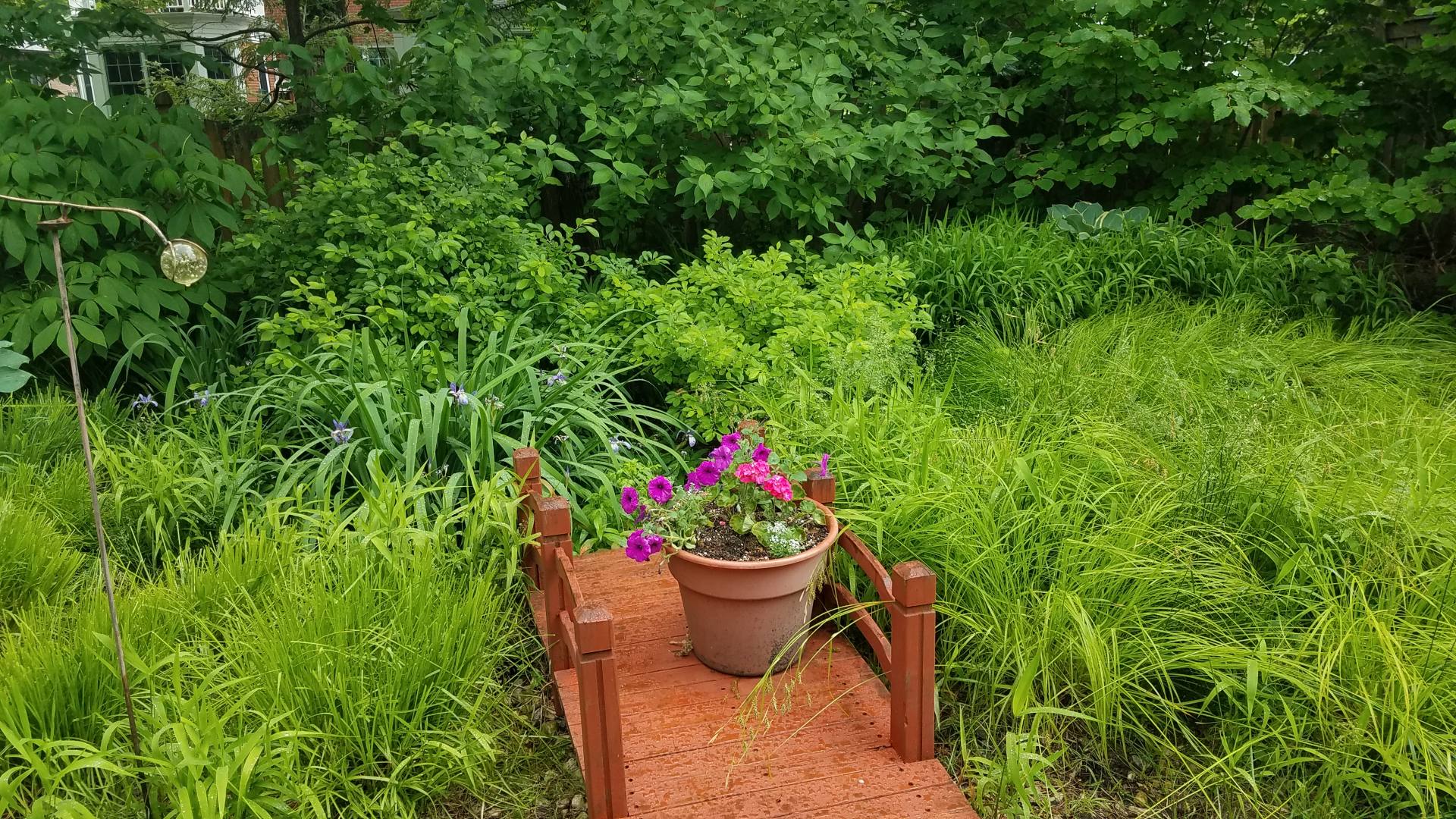Using Native Plants to Manage Water
By Carol Becker
It rains hard and often in spring, and then we have big puddles, muddy gardens and soggy lawns. Then midsummer comes and the garden is dry and hot. The plants are gasping for water and the soil is dry and cracked. Sound familiar? This is typical weather in Illinois, and it presents challenges that only native plants can meet. That’s because native plants suited for these conditions like to have “wet feet” and can grow happily in a boggy spot for as long as it takes to dry out. But these plants also don’t mind the dry soil of midsummer.
I love these plants for their versatility, and I have enjoyed teaching homeowners about how to take advantage of their unique capabilities! Just a few weeks ago, I volunteered for a “show and tell” tour of the gardens I had designed at a local church. I was assigned to stand by the rain garden and explain how it works. Many folks asked me, “Why can’t I use ornamental plants?” So many of my design clients have asked me this when I’m suggesting a native plant rain garden, and it’s always because they don’t understand the versatility of native plants, the way they adapt to local conditions, the way they seem to just “understand” how to thrive in a wet-then-dry garden in Illinois summers.


To make the most of native plants that love spring flooding, we can build rain gardens to contain excess water while it drains away, bioswales to move water from one location to another, or even small ponds in areas that stay permanently wet. But that’s not all. Native plants have the unique ability to filter out harmful chemicals through the use of their root systems. Their tough, deep roots can always find water deep underground in dry times, and also help stabilize the soil in wet areas or on pond banks. In this way they both manage water and at the same time create incredible beauty and improve the soil for all living things.
I recently visited a private garden that uses nearly every one of these techniques to drain surface water entering the yard from all the surrounding houses. Water must flow from throughout the yard to a large rain garden in the back corner, and to accomplish this, the design uses gently graded, rock-lined bioswales to collect and move water in the right direction from every wet location. The right native plants absorb much of the water before it ever gets to the rain garden, and the rest of the water, once in the rain garden, drains away slowly over time. Native shrubs or small trees like serviceberry, dogwood, witchhazel and bottlebrush buckeye give an open woodland feel to the whole drainage area of the yard.
Many and varied are the native plants that play a crucial role in these designs for water management in the Chicago region. My favorite go-to selections include:


- Blue flag iris (Iris versicolor) not only for its early blue blossoms but also for its architectural leaf that endures in the garden all summer.
- Queen of the Prairie (Filipendula rubra) is tall and spectacular, with pink cotton-candy like blossoms that go on and on in early and midsummer if it’s planted in a sunny spot. It’s easy to grow and a butterfly magnet. I don’t know why I don’t see if more often in rain gardens. If you plant it, everyone will want to know “what that plant is.”
- Culver’s Root (Veronicastrum virginicum) is tall with spiky white blossoms, and it’s great in the shady rain garden. It spreads to form a tidy clump.
- Blue-eyed grass (Sisrynchium angustifolium) is a favorite for its delicate look and bright blue, happy-looking little blossoms that go on and on in early summer. It may look delicate, but it’s tough like grass!
- Tussock sedge (Carex stricta) for its tussock-like habit which can be a unique feature in a rain garden border. But really, any Carex is great in a rain garden! I showcased many of them in my last post.
- Swamp milkweed (Asclepias incarnata) is actually my favorite of the milkweed plants and it thrives in the wet-then-dry conditions of a rain garden or bioswale. This plant is also tall and has a lovely pink blossom in early summer.
- Joe Pye Weed (Eutrochium (formerly known as Eupatorium) maculatum) needs room to spread, so it is often found in wet fields in Illinois and Wisconsin. I find that it does well in a wide variety of conditions and it’s great for larger wet areas. It gets quite tall – up to 6 feet – and the birds and bees flock to it when it is in bloom.
- Spiderwort (Tradescantia species) is a shorter plant that blooms prolifically in May and June and is a great border to a rain garden. It spreads, so give it room! And take advantage of its spreading habit by putting it in a bioswale.
With these selections, you can always create a rain garden or bioswale that is unique, stunningly beautiful, and most important, a haven for birds, bees, and butterflies.
Back To Blog
